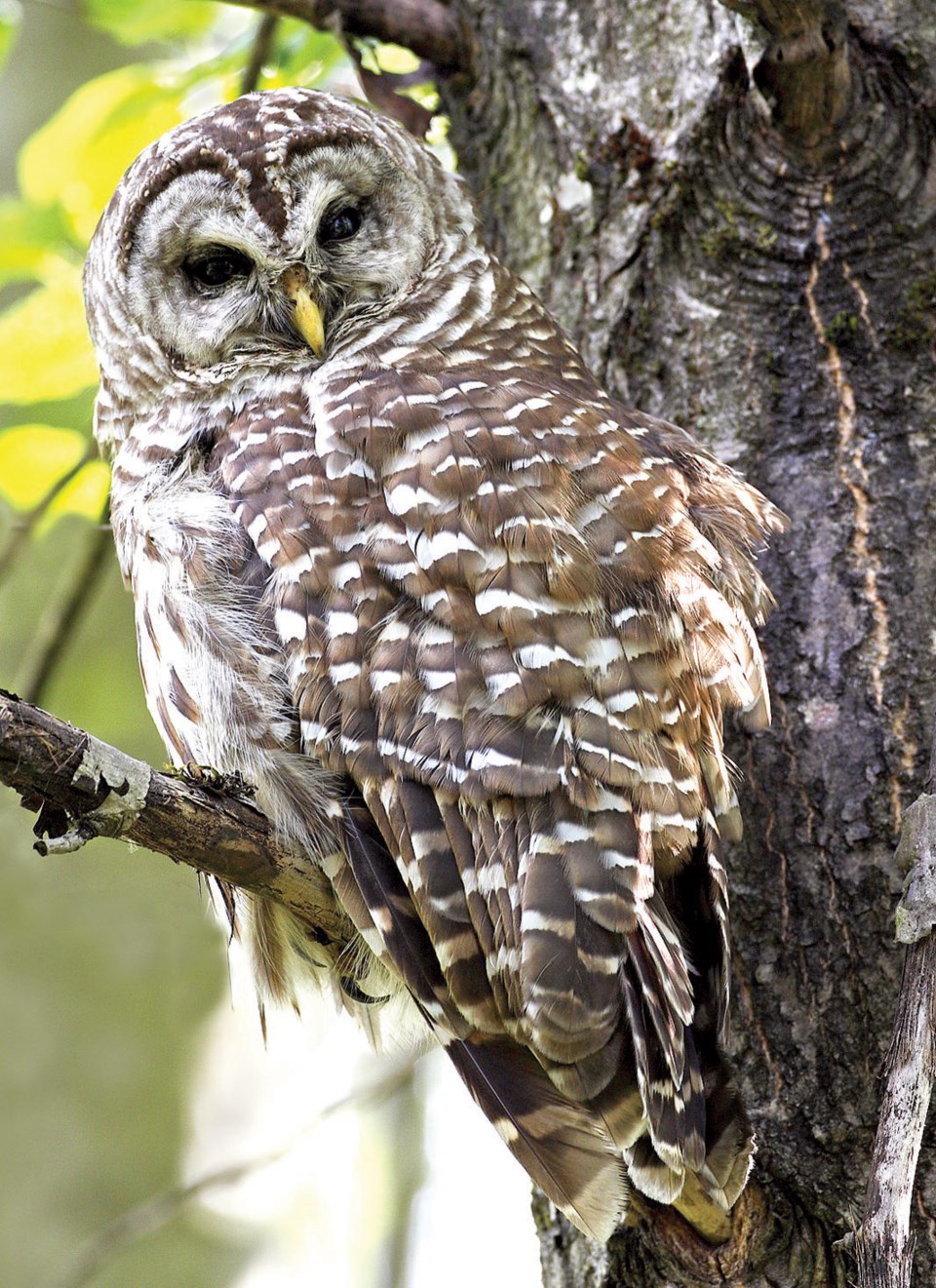Fall is a wonderful season for lovers of nature.
Trees like maples and cottonwoods put on a colourful show, beautiful mushroom are a delight to woodland wanderers, and there are lots of birds to be discovered. Many birds, like waterfowl, raptors, and some songbirds, come to spend the winter on the North Shore. And what a great thrill it is to see flocks of swans and skeins of geese winging their way in the sky above you.
Waterfowl continue to gather in fall off shore from their breeding areas in B.C.'s Interior or in the far North. These include scoters (three species), goldeneyes, two species, harlequin and long-tailed ducks.
Some ducks like the goldeneyes, bufflehead, and scaup are divers; others are known as dabblers ("puddle ducks"), including the mallard, green-winged teal, northern pintail, and American wigeon. Numbers of dabblers also increase as fall marches on. These are birds of ponds, shallower water, like Maplewood's west pond. It's always fun to scan the "regulars" in hopes of finding the rarities like the Eurasian wigeon.
Geese on the North Shore include the Canada goose (common), whitefronted goose (rare) and snow goose (rare). Snow geese are sometimes seen flying overhead heading for places like the George C. Reifel Refuge in Delta. Snow geese on this (Pacific) flyway breed in Siberia. Check carefully as well for the tiny cackling goose, often seen with the Canada goose.
Mergansers specialize in catching fish. They have specialized bills with serrated edges for holding on to their slippery prey. Sawbill is another name for a merganser. Three species should be looked for hooded (often on ponds), redbreasted (more sea going), and common (sea or freshwater). All are very beautiful.
Everybody loves owls, like the great horned spotted on our October nature walk. It is not every day that you spot an owl; they're simply wonderful birds in legend, lore and lifestyles. We had some help finding this owl and a good lesson for discovering other owls and other birds of prey - a mob of crows was making a big fuss. And when crows get excited it's always worth checking out to see what they've discovered - an owl, hawk raccoon and sometimes a cat.
There was a recent report of a Barred Owl at the Conservation Area at Maplewood Flats, also discovered by scolding birds. If you find a flock of birds like chickadee's scolding (harsh chicka-dee-dee) and maybe joined by other birds like kinglets and nuthatches, there is a good chance they've discovered something like a saw-whet owl or a northern pygmyowl.
Late fall is a fine time to watch for other birds of prey like the red-tailed hawk, peregrine falcon or merlin. On our October nature walk we had an excellent look at a merlin. The merlin is a small, fat-flying falcon, and that always a treat to see.
Berries still linger on trees like hawthorns and pacific crabapple, lasting well into early winter (excellent trees to plant for fruit-eating birds). Recently, at Maplewood Flats, visitors were thrilled to watch a flock of cedar waxwings dining on nutritious hawthorn fruits.
Speaking of fruit, dried out (mummified) blackberries attract seedeating birds like the purple finch, while the tangles (thickets) of blackberries provide wintering habitat for spotted towhees, song sparrows and fox sparrows (best place to see them).
The recent sighting of American pipits at Maplewood Flats has been very exciting, since we don't always see this very interesting species. When it walks, it "bobs" and "waggles" its tail. Snails, spiders and insects are prey of this tundra breeder.
November brings the rain, frosty mornings and a dusting of snow on local peaks. No matter what the weather there are always wonderful things to be discovered. Dress warmly, keep safe.
Al Grass is a naturalist with Wild Bird Trust of British Columbia, which offers free walks at the Conservation Area at Maplewood Flats on the second Saturday of every month. The next walk will be Saturday, Nov. 9 starting at 10 a.m. Participants will be searching for the birds and mammals that spend the winter at the Conservation Area. Meet at WBT's site office, 2645 Dollarton Hwy. (two kilometres east of the Iron Workers Second Narrows Memorial Crossing). Walks go rain or shine.



